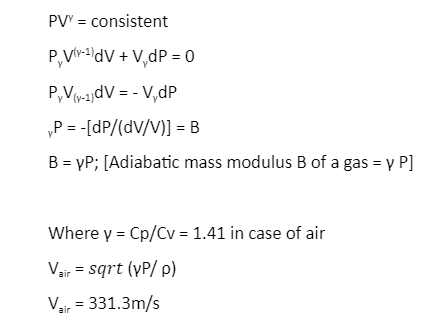What is meant by sound waves?
Sound is a sort of disturbance between molecules that spreads through a medium, like solid, fluid, or gas, to arrive at its objective. Physiologically it is caught by the ear and is understood by the cerebrum of the brain. The ordinary recurrence of sound heard by the human ear is between 20Hz to 20 kHz. Any sound wave which is above 20kHz is called ultrasonic sound, which isn’t heard by people or Bats. Under 20Hz, the sound wave is named infrared.
Sound waves can be divided into two categories:
- Longitudinal
- Transverse
Longitudinal Waves:
Propagation of sound waves occurs through the air or various mediums as a longitudinal wave, in which the mechanical vibration laying out the wave occurs along a similar way as the sending wave. A longitudinal wave can be made in a twisted spring by squeezing a couple of the goes together to approach a strain and a short time later conveying them, allowing the strain to dare to all aspects of the length of the spring. Air should be visible as being produced using layers like such twists, with a sound wave inducing as layers of air “push” and “pull” at one another comparable to the strain dropping down the spring.
Transverse Waves:
In this kind of wave, for instance, the wave is made in a lengthy rope when one end is wriggled back and forth; the development that involves the wave is inverse, or get over, to the heading (along the rope) where the wave is moving. A huge gathering of getting over waves is made by electromagnetic sources, for instance, light or radio, in which the electric and alluring fields are laying out the wave influence inverse to the course of spread.
The speed of sound is characterized by how much the sound wave has voyaged per unit of time as it goes through a medium. It profoundly relies upon the temperature of the medium and the idea of the medium. For solids, the speed of cross-over waves relies upon the shear twisting because of shear pressure as well as on the thickness of the medium. For longitudinal waves, the over two circumstances are the same yet additionally rely upon its compressibility. For liquids, the medium’s compressibility and the medium’s thickness are essential. If there should be an occurrence of gases, just temperature and its atomic design are required.
The connection between the speed of sound(v), its wavelength(λ) and frequency(f) is
v = f * λ
In solid construction, as the particles are firmly positioned to one another, and there is less disturbance of the molecules, the engendering of the vibration through it is quicker, and subsequently, the speed of sound is the quickest through the solids, for that reason, it takes more time to contact you ears when somebody from the other room calls you. In fluids, the particles/atoms are less closely packaged, and consequently, the molecules can move a little, so the speed of sound through a fluid is slow but faster than air. Also, it is the slowest in gases as the atoms in the gases are loosely packed.
Speed of sound in air and Correction of Newton’s Formula
The calculated speed of sound in the air known in recent times is 343m/s, when at 20 degrees Celsius.
Principia (1687), by Sir Isaac Newton, has a calculation of the speed of sound for air as 979 feet each second (298 m/s). This is excessively low by around 15%. The inconsistency is expected principally to dismiss the impact of quickly fluctuating temperature in a sound wave (in present-day terms, sound wave pressure and development of air is an adiabatic interaction, not an isothermal cycle). This blunder was subsequently redressed by Laplace.
Newton expected that when sound spreads through the air, the temperature stays consistent (for example, the interaction is isothermal).
PV = steady
P dV + V dP = 0
⇒ P dV = – V dP
P= – [dP/(dV/V)] = B
Therefore, Bulk modulus of elasticity , B =P
Hence, vair = sqrt (P/ρ)
So, at NTP
P= 1.01 * 105 N/m2, ρ = 1.3 kg/m³
V = sqrt [(1.01 * 105)/1.3] = 279 m/s
Laplace Correction:
Laplace expected that the engendering of sound in air is an adiabatic cycle not the isothermal, it is Adiabatic.

Which is in concurrence with the trial esteem (332 m/s) along these lines
Hence, we can reason that sound waves spread through gases adiabatically.
Conclusion:
Because the speed of sound is very low in the air, therefore we hear lightning a little after the lightning is seen. Sir Newton was the first person to propose the equation to calculate the speed of sound in the air, but the only shortcoming in that equation was that he considered the process to be isothermal. However, with the advent of knowledge, Laplace upgraded this equation and gave out the same result as the experimental value. Hope this article was helpful enough.
 Profile
Profile Settings
Settings Refer your friends
Refer your friends Sign out
Sign out













